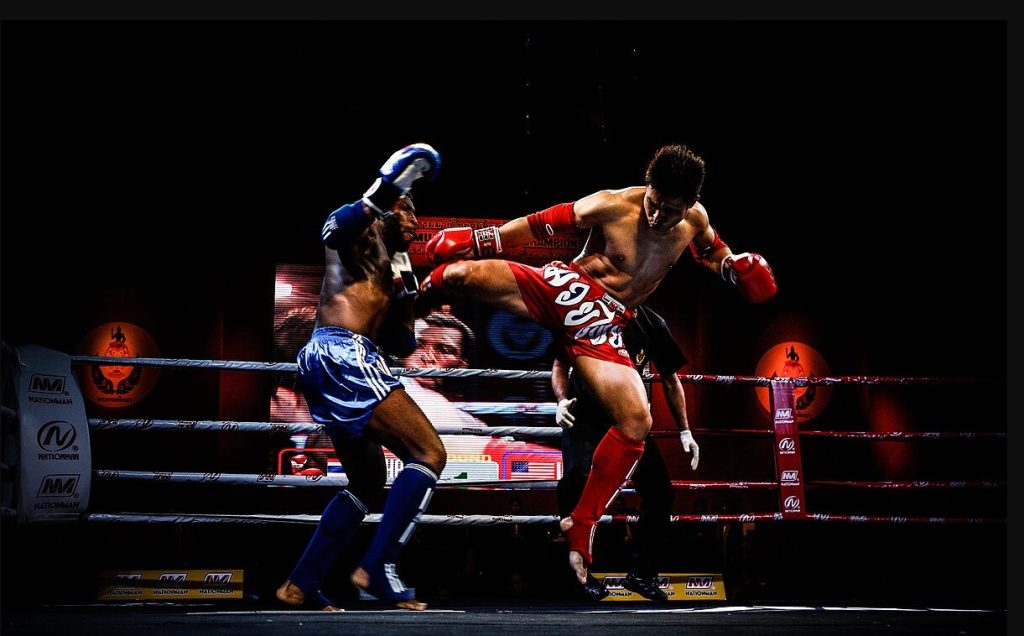Muay Thai, also known as the “Art of Eight Limbs,” is Thailand’s national sport and one of the most respected martial arts in the world. It incorporates punches, kicks, elbows, and knee strikes, offering a full-body approach to striking combat. But despite its modern popularity, the question lingers: Who invented This?
Table of Contents
The answer is both fascinating and complex. It was not invented by a single individual, but rather developed over centuries as a martial tradition tied closely to Thailand’s culture, warfare, and royal history.
The Origins of Muay Thai
This evolved from older combat styles practiced by the Thai people for both military defense and hand-to-hand combat. These early forms of fighting date back over 700 years.
| Period | Key Development |
|---|---|
| Sukhothai Era (1238–1438) | Early military training included striking and grappling. |
| Ayutthaya Era (1351–1767) | Muay Boran (ancient boxing) formalized; used by soldiers. |
| Thonburi Era (1767–1782) | Use of Muay Boran in wartime resistance. |
| Rattanakosin Era (1782–1932) | Transformation of Muay Boran into competitive sport. |
The term “Muay Thai” became commonly used in the early 20th century to distinguish the modern sport from Muay Boran, the traditional martial form.
Was This Invented by a Specific Person?
However, one legendary figure often credited with elevating the art is Nai Khanom Tom, a 17th-century warrior and Muay Boran expert. According to legend, he was captured by Burmese soldiers and forced to fight against their best warriors. He defeated them all, showcasing the effectiveness of Thai fighting techniques.
| Name | Role in Muay Thai History |
|---|---|
| Nai Khanom Tom | National hero known as the “Father of Muay Thai”; demonstrated Thai boxing to foreign audiences. |
| King Prachao Sua | 18th-century king who promoted Muay Thai by competing secretly in local fights. |
While Nai Khanom Tom did not “invent” this, he symbolizes the art’s power and spirit.
Muay Boran vs. Muay Thai
To understand Muay Thai’s invention, it’s important to distinguish it from Muay Boran.
| Feature | Muay Boran | Muay Thai |
|---|---|---|
| Origin | Ancient Thailand, pre-1900s | Early 20th century modernization |
| Purpose | Battlefield, military training | Sport, self-defense, fitness |
| Rules | No formal rules or gloves | Governed by modern sports regulations |
| Techniques | Includes throws, joint locks, strikes | Focuses mainly on striking |
| Protection | None or minimal | Gloves, mouthguards, rules, referees |
This evolved by removing the most dangerous techniques and adapting to sport competition, including rounds, weight classes, and scoring systems.
Transformation into a Modern Sport
The shift from traditional combat to organized sport began in the 1920s–1930s, especially during the reign of King Rama VII. Boxing rings, referees, and gloves were introduced to make Muay Thai safer and more appealing to international audiences.
| Era | Major Change |
|---|---|
| 1920s–1930s | Introduction of Western-style boxing elements. |
| 1940s–1950s | Establishment of national stadiums (e.g., Rajadamnern Stadium). |
| 1960s–1970s | Global recognition begins. |
| 1990s–Present | Muay Thai included in international tournaments and adopted globally. |
Global Spread and Cultural Influence
Today, thsi is practiced worldwide. Organizations like WBC Muay Thai and IFMA (International Federation of Muaythai Associations) regulate global competitions. Its rise in popularity also stems from the growth of Mixed Martial Arts (MMA), where Muay Thai is a fundamental striking base.
| Country | Impact of Muay Thai |
|---|---|
| Thailand | National sport; deeply tied to identity and culture |
| USA | Gyms and fighters incorporating it into MMA |
| Brazil | Blended with Brazilian jiu-jitsu in MMA |
| Netherlands | Known for aggressive Dutch Kickboxing + Muay Thai mix |
| Japan | Promoted through K-1 kickboxing tournaments |
Cultural and Spiritual Roots
It is more than just fighting—it’s a cultural performance. Before matches, fighters perform the Wai Kru Ram Muay, a ritual dance honoring their teachers, families, and the spirits. This tradition stems from ancient beliefs and remains central to the sport.
The fighters often wear mongkhon (headbands) and prajioud (armbands) for spiritual protection—further highlighting the art’s roots in Thai Buddhism and animist traditions.
A Collective Invention Rooted in Thai Heritage
So, who invented Muay Thai? The short answer is: no one person.
It is the result of centuries of development, born out of necessity, warfare, and national pride. Its techniques were refined by soldiers, warriors, and kings, and shaped by Thailand’s culture, spirituality, and need for defense.
Key Facts About Muay Thai
| Aspect | Description |
|---|---|
| Origin | Ancient Thailand (13th–14th century) |
| Founders | No single founder; evolved from military practice |
| Legendary Figure | Nai Khanom Tom (17th-century fighter) |
| Transition to Sport | Early 20th century, with modernization |
| Cultural Elements | Wai Kru dance, Mongkhon, Prajioud |
| Global Popularity | Practiced worldwide, especially in MMA and fitness |

